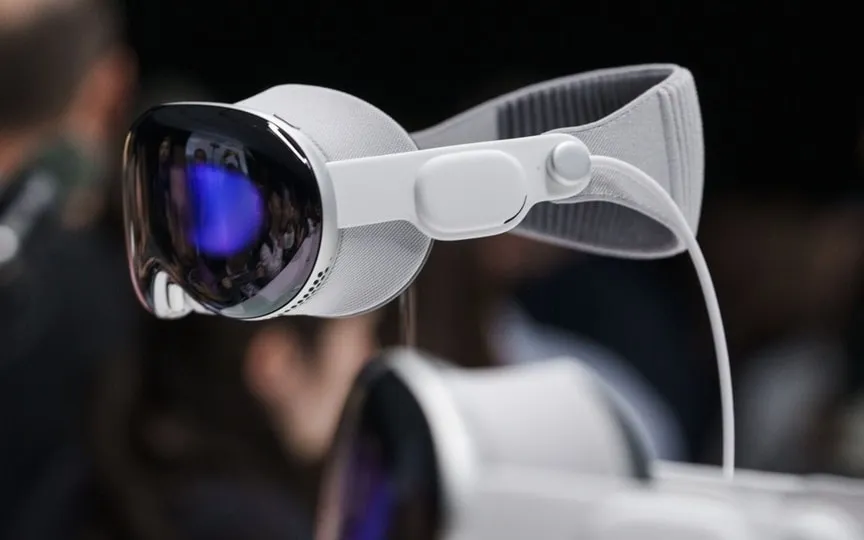Comparing Apple Vision Pro and Meta Quest 3: A Look at the Mixed Reality Contest Between Two Tech Giants
Apple and Meta, two major tech giants, have both ventured into the realm of mixed reality. While Meta Platforms has already established itself in this field with its Metaverse and Meta Quest products, Apple has now joined the fray. During the World Wide Developers Conference (WWDC) 2023 on June 5, Apple unveiled its inaugural mixed reality headset, the Apple Vision Pro. Despite their shared goal of enhancing mixed reality experiences, these headsets cater to distinct user demographics.
Apple Vision Pro
Developed by Apple’s Vision Products Group (VPG), a unit led by Mike Rockwell, Vision Pro is a spatial computer that allows users to experience applications and features in an augmented reality (AR) and virtual reality (VR) environment. The headset has 23 million micro-OLED pixels in different screens, as well as 5 sensors and 12 cameras. All this technology is powered by a fan-cooled PC with an M2 chip and a new R1 chip running VisionOS. It has an external battery that lasts up to two hours and can be connected with a woven cable.
We are now on WhatsApp. Click to join.
While all this technology seems groundbreaking, the Vision Pro has a number of issues. The first is its price. Unlike the recently launched Meta Quest 3, which is aimed at regular Metaverse users, the Apple Vision Pro is a high-end headset, but it’s priced at $3,499. In this price range, it’s comfortably the most expensive MR headset on the market, but you can’t buy it yet. Apple announced that Vision Pro won’t go on sale until early 2024, and so far only a handful of developers have gotten access to it.
So would mass market consumers be willing to pay thousands of dollars for a product that only the developers have tested behind the scenes? We’ll see.
Another problem with Apple Vision Pro? Its ease of use and accessibility. Although only a handful of developers have gotten their hands on the Vision Pro, there have already been issues, such as the one causing neck strain. There is a battery attached to the back of the headset, which has to be carried wherever you take the headset, reducing its portability. In his latest Power On newsletter, Bloomberg’s Mark Gurman reported that Apple is considering solving this problem with a neck strap that supports the headphones. Although Apple has also tried to make the headset thinner, it has created a whole new problem – support for prescription glasses.
According to Gurman, there really isn’t room for prescription glasses in the Vision Pro. Instead, Apple announced that it is partnering with Zeiss to offer custom prescription lenses that fit into the headphone slots. While this may seem like a perfect solution, it raises a logistical question. Could Apple and Zeiss offer their millions of potential users around the world customized prescription lenses? What if the vision changes? Again, they would have to pay big bucks for another pair of lenses. Another possible solution is to supply Vision Pro with built-in prescription lenses. But it raises the same problems again.
Meta Quest 3
On paper, Meta Quest 3 sounds like a surefire winner. It’s cheaper than Apple Vision Pro, is readily available, and Meta already knows mixed reality thanks to its Metaverse. But the reality is not so simple. According to Gurman, Meta’s main goal with Quest 3 is to lower the price. Although it’s priced at $500, which is seven times cheaper than the Vision Pro, it’s still $200 more expensive than the Quest 2. Therefore, lowering the price might mean it reaches a wider audience. Gurman claimed that Meta would market the Quest 3 as a mid-range offering next year and could potentially release a successor to the failed Quest Pro, which debuted at $1,500.
Metal already has an advantage over Apple because it has developed a platform for Quest 3. It has a wide selection of apps, games and more that users can dive right into without waiting. However, the company is still cautious about Apple. A Meta employee told Gurman: “We’re in the ‘fear of Apple’ phase.”
With its pioneering features and flagship features, will the Apple Vision Pro beat the Meta in the race to offer the best mixed reality headset on the market? Or will Quest 3 take over and offer affordable access to an interconnected online world? We’ll see. But the battle between the two tech titans could be one to watch this year and for the foreseeable future.
One more thing! We are now on WhatsApp channels! Follow us there to never miss any updates from the tech world. If you want to follow ReturnByte channel on WhatsApp, click here to join now!




